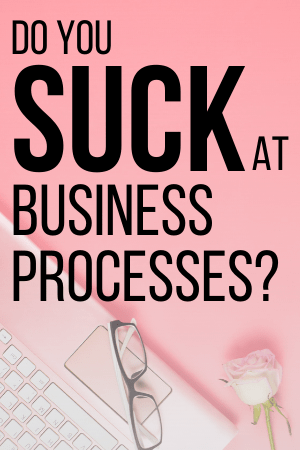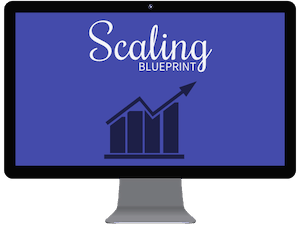Still uncomfortable about outsourcing or hiring more people, because you’re scared the quality of your product or service may drop? Or, do you wish you could eliminate errors in your business operations to increase customer satisfaction?
The solution you’re looking for is called business process management.
Business process management (BPM) is a long-term management approach you can use to continually review and improve your business processes. It starts with you documenting your processes, and continues all the way to managing the processes and making updates to them for efficiency and to improve the bottom line.
Before you ask, a business process can be described as those connected tasks or steps that are carried out in a specified order or sequence in your business to achieve a goal or an objective.
They’re usually repeated over and over and can be found in all areas of most businesses, no matter the business size or type.
While a simple process may involve only one person from start to finish, others may require a higher number of people and at times, multiple departments.
But having processes in your business is not enough.
For best results, no matter the stage of your business, your processes should always:
- Remain relevant, even as your business changes or grow
- Be documented, available, and accessible to all team members
- Be carried out as specified, without any form of deviation
You can make this happen with business process management, which I defined at the start of the article.
In this article, we’ll discuss:
- What is Business Process Management?
- Business Process Management Cycle
- Business Process Management Software
- 7 Fantastic Results You Can Get From Business Process Management
Let’s dive a little deeper!

What is Business Process Management?
Business process management is a long-term management approach you can use to always review and improve your business processes on a continuous basis.
Because it’s on-going and never ends, you can keep a constant eye on your processes, with or without the use of technology, to achieve your strategic business goals in an efficient and effective manner.
With so many big and small businesses embracing it and reporting amazing returns on investment, its popularity has been growing for some time now.
In fact, the global business process management market was valued at 6.96 billion USD in 2016 is expected to grow to 14.89 billion USD by 2021.
But, where do you start?
You can start by writing down and documenting your processes, whether you’re a one-person operation without a growth strategy or you’ve grown enough to have a few team members.
By doing so:
- Your processes become easier to review, improve and manage
- You can train new team members at a much faster rate
- You won’t have to deal with a vacuum if a team member with key process knowledge leaves without notice
Next, let’s consider what separates business process management from a very similar, but different strategy: business process reengineering (BPR).
Business Process Management vs. Business Process Reengineering
Even though both are used to improve business processes, they’re quite different, as you’ll see below.
- Project type: While BPM is an ongoing activity, BPR usually has a start and end date
- Method: BPM involves tweaking existing processes while BPR usually redesigns processes from the ground up
- Cost: BPM usually costs less than BPR
- Time: BPM takes less time than BPR in most cases
- Expected result: With BPM, improvements can increase over time while BPR leads to a drastic improvement within a specified period
Now that you understand this, let’s look at the different stages of the business process management cycle.
Business Process Management Cycle

Because business process management is an ongoing strategy and it’s usually seen as a circle made up of the following stages:
- Stage 1: Identify
- Stage 2: Review
- Stage 3: Redesign
- Stage 4: Model
- Stage 5: Implement
- Stage 6: Track and Monitor
- Stage 7: Refine and Improve
Let’s discuss each stage with more detail!
BPM Stage 1: Identify
Obviously, you cannot manage or improve what you don’t know, so the first thing is to identify all the processes currently being used in your business.
For instance:
- Core processes used to directly produce your products or deliver your services
- Support processes like accounting processes, hiring processes, and so on
- Management processes used for staying on top of all that’s going on in your business as the leader or owner
In addition, you also need to define and take note of key performance indicators (KPIs) for each identified process.
BPM Stage 2: Review
Next, it’s time to study and observe each process in action, thoroughly review, and also analyze them to:
- Determine if they’re still relevant to your business goals
- Understand the strengths and weaknesses of each process
- Identify and define any problem, delay, wastage, bottleneck, defect, or inefficiency that exists in each process
To ensure you get a comprehensive picture, remember to discuss with process owners and those that regularly work on the process. Also, don’t forget to study process documents when available.
BPM Stage 3: Redesign
Using everything you’ve learned in the previous stage, it’s time to improve each existing process by making changes and redesigning.
This may require adding or removing one or more tasks or steps in a process or even removing a process totally if it’s no longer relevant to your current business goal.
Remember, the improved version of your existing process must address and resolve all shortcomings identified earlier and also align with your strategic business objectives.
BPM Stage 4: Model
Now that you’ve improved your processes, the next thing is to create a model, taking into consideration various scenarios or different factors that can influence it, one way or another.
Modeling simply means you’re presenting the improved process in the form of a diagram to make it clearer, easier to understand and picture, and to document it for easy reference and review.
Examples of such diagrams include a flow chart, a map and so on.
BPM Stage 5: Implement
As long as everyone is on the same page with the model, then it’s time for implementation.
Although this stage can be carried out with or without the use of a business process management software, the reality is that using a software program can make everything easier and faster to achieve, in addition to so many other benefits.
BPM Stage 6: Track and Monitor
After implementation, the next thing is to continuously track and monitor your progress so you can measure and determine if everything is going on as planned and designed, and whether it’s also producing expected results.
BPM Stage 7: Refine and Improve
Armed with your findings while tracking and monitoring, this is the stage where one of two possible decisions are made:
- Maintain all improvements achieved so far and even improve further, if no other gap was noticed
- Repeat the business process management cycle all over again to address remaining gaps, challenges, or problems still observed while tracking and monitoring
Once again, always remember that BPM is a continuous cycle that never ends.
Business Process Management Software
If you’re really serious about scaling your business, then you can’t afford to ignore something as useful as a business process management software.
Apart from helping to create, update, monitor, control, manage, and automate your business processes in an easier and faster way, it can also help ensure that every member of your team is kept in the loop and updated at all times.
On top of all that, you’ll also achieve desired results with fewer errors, mistakes, improper communication, etc.
Well, the good news is that so many products suitable for different business needs and budgets in the market.
And, because of all those options, choosing the right software for your business may appear overwhelming, but it doesn’t have to be.
So, let’s look at everything you need to consider to make the right choice.
How to Choose the Right BPM Software
Check out the following questions on a lot of important and relevant factors:
- Do you need cloud-based software or one that’s deployed on-premise and stored on your server or software that provides both options?
- Can this software be used to design, model, test, and implement processes and workflows?
- Can you define rules, conditions, metrics, and key performance indicators attached to each of your processes with this software?
- Is this software easy to use for everyone in your business without writing any form of code?
- Will this software improve collaboration in your business by providing an enabling platform for you and your people to communicate effectively, share ideas and even have robust discussions?
- Can this software be used to generate forms, analytics, and reports?
- Will this software be accessible to everyone on your team whether they are working onsite, offsite or remote?
- Can this software be integrated with other business software you’re already using such as CRM, Microsoft Office and so on?
- Does the cost of this software, plus all hidden costs, fall within your budget?
- Do you know if other businesses similar to yours have achieved desirable results with this software?
- Does this software have too many features that your business does not really need?
- Will this software help you achieve your business goals or can it be customized to do so?
By taking note of your answers and using them as a guide, you can choose the right business process management software for your business.
Examples of BPM Software
Here are some examples of business process management software, in no particular order:
- Bpm’online
- Kissflow
- Zoho Creator
- ProcessMaker
- Nintex
- Bizagi
- Process Street
- Appian
- Oracle BPM
Feel free to check out those or use my personal recommendation of Clickup and Google Sites.
7 Fantastic Results You Can Get from Business Process Management
When used the right way, BPM can help you achieve fantastic results on a consistent basis, whether you’re a blogger or an online business owner.
Not fully convinced?
Then check these out:
- As far back as 2016, 41% of businesses observed a return on their business process management investment within one year while 17% saw a return on investment within 6 months, according to AIIM research
- 65% of respondents agreed or strongly agree that business process management tools and processes helped their businesses to improve efficiency, versatility and customer satisfaction, according to a 2018 survey done by BPTrends
Knowing those facts, here are 7 results you can get from business process management:
- Improved ability to innovate and change
- Effective checks and balances
- Lower cost
- Better compliance
- Higher productivity
- Increased customer satisfaction
- Higher revenue
Learn more about these results below!
1. Improved Ability to Innovate and Change
Do you know that businesses die when they’re slow to notice or respond to changes in their niche or industry?
Believe it or not, many businesses have died for just this reason.
But guess what?
Business process management can help your business avoid this deadly trap, once you start using it to improve your processes.
And it’s all because you can constantly review, improve, and customize your processes as often as required, especially when your strategic business goals suddenly change due to other changes around you, like:
- Changing customer wants and needs
- Changes in your industry or niche
- Changing employee needs and wants
- Changes in your products or services
With the help of business process management, you can transform your business into a more flexible, agile, responsive, and innovative one so that you can compete favorably with your competitors and even stay ahead of them.
2. Effective Checks and Balances
Apart from customizing your processes, you can also introduce necessary controls with business process management to ensure that:
- Process models are always followed without any form of deviation
- Each member of your team know their role and what is expected of them, at any point in any process
Not only do these checks and balances help eliminate unnecessary tasks and processes, but they also prevent negligence, fraudulent activities, human mistakes and errors, wastages, unnecessary delays, etc.
3. Lower Cost
Another wonderful outcome of using BPM is a drastic reduction in your costs.
Since it eliminates all forms of inefficiencies in your business operations, you can rest assured that all unnecessary costs attached to all these issues are also removed.
And, what’s more, your improved processes will be able to generate more output with minimal resources and at a much lower cost.
4. Better Compliance
Most likely, you already know total compliance is your best bet if you’re in an industry with strict rules and regulations.
With BPM, all industry regulations can be implemented as part of your control so they become a normal part of your process without any other special effort.
Of course, as an industry compliant business, you can expect your brand to become more competitive since it will be more attractive to both existing and potential customers.
5. Higher Productivity
Remember those checks and balances that business process management usually brings into your processes?
Well, another amazing result is that it delivers higher productivity.
Once your processes become more efficient, you can expect them to deliver agreed results consistently, in terms of a:
- Higher number of products produced or services delivered
- Faster turnaround time
- Higher quality of products and services
6. Increased Customer Satisfaction
It’s no secret that without customers, there would be no business.
And, that’s why shrewd business owners and entrepreneurs give priority attention to the needs and wants of their customers, even as it changes from time to time.
Because business process management makes your business more flexible and responsive, you can focus more on your customers by customizing your processes to meet and satisfy their needs at all times.
As a result, with increased customer satisfaction, not only will you retain existing customers and attract new ones, you’ll also be able to grow and scale your business to any desired level.
7. Higher Revenue
With business process management, you can also make more money in your business.
When you become more customer-focused and satisfy your customers consistently, they’ll likely eagerly return to buy from you again and again and even recommend your business to all their friends, family, neighbors, and any other person in their community.
This makes it possible for your revenue to shoot up so you can keep smiling to the bank.
Conclusion
Just before we round up, let’s take a quick look at everything we’ve discussed so far:
- What is Business Process Management?
- Business Process Management Cycle
- Business Process Management Software
- 7 Fantastic Results You Can Get from Business Process Management
And, on a final note, remember…
With business process management, you can grow your business to any level you want, without any reduction in your product or service quality, even if you’re thinking of outsourcing or offshoring any part of your operations.
So, why not take the first step today and start documenting your business processes?
Let us know in the comments below if you have any questions on this




